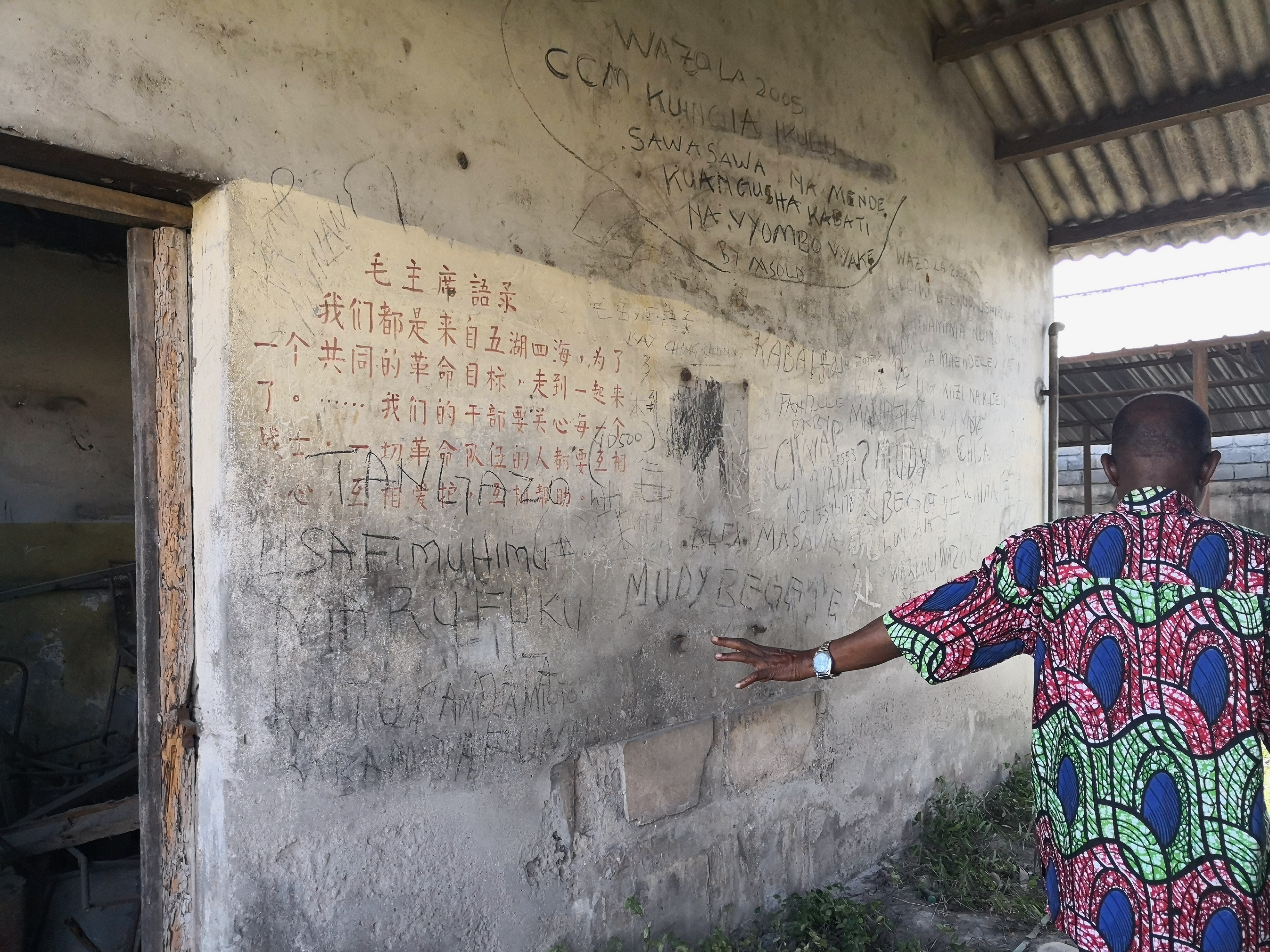The subsequent seven principles are: (2) in providing aid to other countries, the Chinese government strictly respects the sovereignty of recipient countries, and never attaches any conditions or asks for any privileges; (3) China provides economic aid in the form of interest-free or low-interest loans, and will extend the time limit for repayment when necessary so as to lighten the burden on recipient countries as far as possible; (4) in providing aid to other countries, the purpose of the Chinese government is not to make recipient countries dependent on China but to help them embark, step by step, on the road to self-reliance and independent economic development; (5) the Chinese government does its best to help recipient countries complete projects that require less investment but yield quicker results, so that the latter may increase their income and accumulate capital; (6) the Chinese government provides the best-quality equipment and materials manufactured by China at international market prices, and, if the equipment and materials provided by the Chinese government are not up to the agreed specifications and quality, the Chinese government undertakes to replace them or refund the payment; (7) in giving any particular technical assistance, the Chinese government will see to it that the personnel of the recipient country fully master the technology; and (8) the experts dispatched by China to help in construction in recipient countries will have the same standard of living as the experts of the recipient country. Chinese experts are not allowed to make any special demands or enjoy any special amenities.
Deborah Brautigam, The Dragon’s Gift: The Real Story of China in Africa (Oxford: Oxford University Press, 2009), 41.
Weizhong Fang, eds., The Chronicle of the Economy of the PRC (1949-1980) (共和国经济大事记)(1949-1980) (Beijing: China Social Sciences Press, 1984), 544, translated by the author.
Xiaoyun Li and Wu Jin, “The Practical Experience of China’s Aid to Africa and the Challenge It Faces” (中国对非援助的实践经验与面临的挑战) China Agricultural University Journal (Social Sciences Edition) 26, no. 4 (2009): 45-54, translated by the author.
Quintin Bach, “A Note on Soviet Statistics on Their Economic Aid,” Soviet Studies 37, no. 2 (April 1985): 269-275.
Lin Shi et al., China Today: Economic Cooperation with Foreign Countries (当代中国的对外经济合作) (Beijing: China Social Sciences Press, 1989), 140, translated by the author.
This fable appears in multiple texts with slight differences. The earlier earliest sources appeared in the third to the first century B.C. One is《吕氏春秋·贵公》, section “Honoring Impartiality,” in John Knoblock and Jeffrey Riegel, The Annals of Lv Buwei: A Complete Translation and Study (Stanford: Stanford University Press, 2001), 71; and《说苑·至公》, section “Supreme Impartiality,” Shuo Yuan/Garden of Stories, translated by the author.
Kojin Karatani. The Structure of World History: From Modes of Production to Modes of Exchange (Durham, NC: Duke University Press, 2014).
Karl Marx, Critique of the Gotha Program (Part 1) (1875). See ➝.
I am grateful to Łukasz Stanek for reminding me of this fact.
For instance, Branko M. Peselj, “Communist Economic Offensive Soviet Foreign Aid—Mans and Effects,” Law & Contemporary Problems 29, no. 4 (1964); Philip Snow, The Star Raft: China’s Encounter with Africa (New York: Weidenfeld & Nicolson, 1988), 145-147.
Rugen Ye et al., The Biography of Fang Yi (方毅传) (Beijing: People’s Press, 2008), 476, translated by the author.
Zhangxi Cheng and Ian Taylor, China’s Aid to Africa: Does Friendship Really Matter? (London: Routledge, 2017), 32.
Shanghai Municipal Archives (No. B32-2-121).
Hong Zhou and Hou Xiong, China’s Foreign Aid: 60 Years in Retrospection (Singapore: Springer, 2017), 79.
Michael Wolfers, Politics in the Organization of African Unity (London: Methven, 1980), 167.
Julius Nyerere. Non-alignment in the 1970s (Opening address given on April 13, 1970 for the Preparatory Meeting of the Non-aligned Countries, Dar es Salaam, April 13–17, 1970), printed by the Government Pinter, National Archives of Tanzania.
Ng’wanza Kamata. Development as Rebellion: A biography of Julius Nyerere (Book II) (Dar es Salaam: Mkuki na Nyota, 2020), 205.
Institute of International Development Cooperation, Ministry of Commerce, PRC 2020 Report of China and International Development (《中国与国际发展报告2020》以“纪念、传承与创新—中国对外援助70 年与国际发展合作转型), 97, translated by the author.
Karl Marx, “Money, Or the Circulation of Commodities,” in Capital Vol. 1 (1867). See ➝.
Ye Liu, “New China and the New World: Three Lines to Understand China's Early Architectural Foreign Aid,” in Exporting Chinese Architecture, eds. Charlie Qiuli Xue and Guanghui Ding (Singapore: Springer, 2022), 25–44.
Ye et al., Fang Yi, 268.
Zhou et al., China’s Foreign Aid, 19-20.
China State Construction Engineering Corporation (CSCEC) is the exception. The other three, namely, China Road and Bridge Corporation (CRBC), China Complete Plant Exportation Company (COMPLANT), and China Civil Engineering Construction Corporation (CCECC) all have predecessors that trace back to 1958, 1959, and 1968, respectively. The predecessor of CCECC, for instance, was the Foreign Aid Office of the Ministry of Railways, which was set up for conducting TAZARA in 1968.
Zhou et al., China’s Foreign Aid, 155.
Administrative Measures for Foreign Aid 《对外援助管理办法》, 2021. See ➝.
